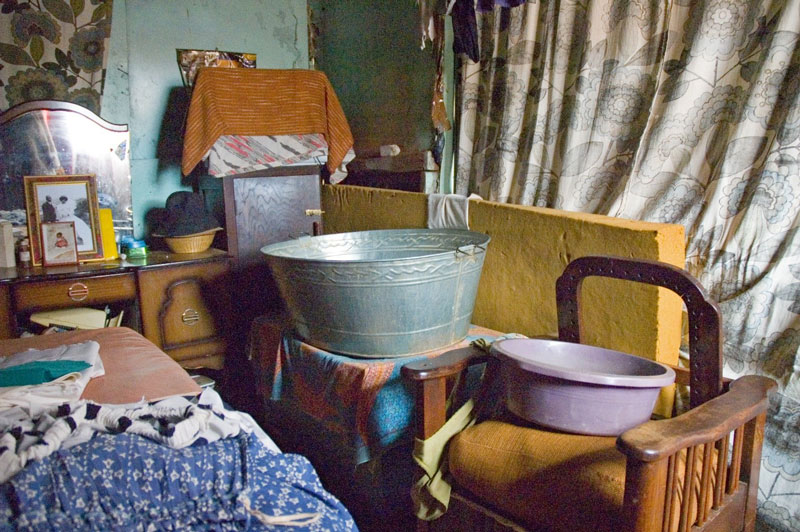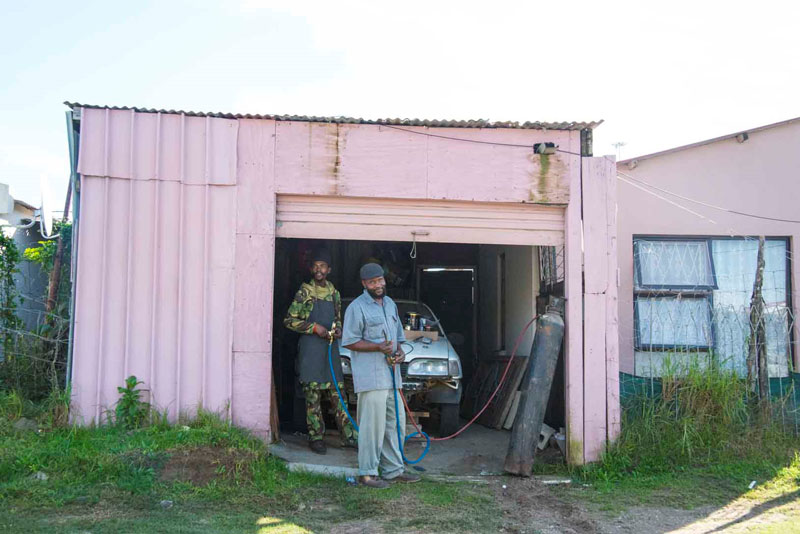Angela Mathee
There is a ghastly economic dilemma facing many South African households living in poverty and operating cottage industries – in order to eat they have to accept being slowly poisoned inside their own homes.
In 2007, I was part of a South African Medical Research Council team conducting a survey of the blood lead levels of first grade school children in South African cities.
Its properties, such as malleability, non-corrosiveness and low melting point, have rendered lead an exceptionally useful metal in modern society, which is essentially inconceivable without it.
Lead can be found in mobile phones, computers, television sets, cables, wheel balancing weights, hair dyes, arms, ammunition, fishing sinkers, protective clothing, cabling, cookware and ceramicware, to mention just a few items. On the other hand, lead is a powerful neurotoxin which, even at low levels, has been associated with learning difficulties, behavioural abnormalities, aggression and violent conduct. At higher concentrations, lead exposure has been linked to damage to organs such as the brain, heart and kidneys, and at very high levels may cause permanent muscular paralysis, coma and death. The use of lead in our society is thus the epitome of the proverbial double-edged sword.
We visited the homes of children in the survey with the highest blood lead concentrations, to try and identify and eliminate the source of the metal. One of those children was a seven year old girl named Kathy[1] from the impoverished Johannesburg township of Riverlea Extension 1. Her home was a tiny corrugated metal, single-roomed shack in the backyard of one of the township dwellings. She shared the single room, which served as kitchen, bathroom, bedroom and workplace, with a sibling, her pregnant Mom and her Dad. Within minutes of our arrival and explanation of the purpose of our visit to her Dad, the source of the lead in Kathy’s blood became apparent, as did the dreadful dilemma faced by the family: a no-win choice between hunger and ill health.
[1] *Not her real name

The only source of income for the family was the electrical repair work that Kathy’s Dad undertook on neighbours’ television and radio sets and various electrical appliances. For this he used lead solder. He worked at the small table in the shack, the same one on which food was prepared, and at which the family ate their meals every day. It was at night that he laboured to generate the only means of survival for family, while his wife and children lay sleeping just a metre or two away, close enough to inhale the toxic lead vapours. Because the placenta is at best a very weak barrier to the passage of lead particles from mother to foetus, the lead exposure would also have extended to his fragile, unborn child. Especially when the door and tiny window of the shack was closed, lead particles would undoubtedly also settle on the
floor and furniture, creating multiple pathways of exposure to lead for his loved ones. Young children crawling and playing on the floor or soil would have been at highest risk of daily exposure to appreciable amounts of lead. Studies around the world have shown that at blood lead levels as low as 3 µg/dL in children, reductions in intelligence scores and behavioural problems are significant. At the time of our visit, Kathy’s blood lead level was well over 20 µg/dL; a level at which detrimental cognitive and behavioural effects were highly likely.
On presentation of the results of her blood lead test, and explanation of the associated health consequences, Kathy’s father’s heartrending response was “please don’t tell me that what I’m doing is harming my child, because if I don’t do this, we don’t eat”. His words stopped me in my tracks, silencing the planned advice to find an alternative occupation. They were poignant, and captured the agonizing predicament facing a growing number of families for whom the stagnant South African economy no longer provides any prospects of a livelihood; a situation which has been heightened during the current COVID-19 pandemic. Instead their hopes are pinned on the informal sector, and in Kathy’s case a particular sub-sector of the informal sector referred to as “cottage industries”. Cottage industries are characterised by their conduct in the home setting, and their organisation around families or households. Cottage industries are almost completely unregulated, and exempt from worker compensation laws and other occupational health and safety regulations. However, a wide range of pollutants, such as lead, arsenic, mercury and cadmium, may be used in cottage industries, such as welding, motor vehicle and electrical repairs, spray painting, pot and jewellery-making and hairdressing. The operation of cottage industries may expose families to a range of harmful substances, such as toxic metals and volatile organic compounds, which may be exacerbated in situations of limited knowledge of the associations with ill health outcomes. The lack of separation, or integration, of cottage industry activities from living spaces, means that all household members may be chronically exposed to hazardous substances, which is seldom the case in the formal occupational sector. Those who spend most of their time in the home environment, for example young children, the elderly, those with pre-existing ill-health conditions and pregnant women and more vulnerable to exposures from cottage industries.
A study undertaken in five neighbourhoods in the south of Johannesburg showed how widespread lead-related cottage industries may be in certain areas. Across the five study sites 19% of households operated a lead-related cottage industry; in Riverlea the proportion was as high as 37%, with electrical repairs and hairdressing being the most widely practised activities. At these levels, the public health impact in affected communities may be significant.
Protecting the health of people involved in home-based enterprises is recognised as a major challenge, especially given the informal nature and relative concealment of cottage industries within dwellings and backyards. However, given the scale of operation of cottage industries, which may increase in the light of the ongoing sluggishness of the formal economy in South Africa, scaled up public health action is warranted. Research and environmental surveillance programmes are urgently needed to address the paucity of information on the extent of exposure to toxic substances in households operating cottage industries.
In the short term, the following are of particular importance to protect workers, their families and neighbours, and especially vulnerable groups such as young children: Awareness programmes on relevant hazards; the promotion of protection measures such as good ventilation in the workplace; the use of protective clothing; measures to clean and reduce contamination in the home environment.
Kathy’s story illustrates the oftentimes insidious nature of toxic exposures within cottage industries. In contrast to formal sector workplaces, family members, from the oldest to the youngest, as well as during the foetal stage, may be exposed to toxic substances on a continuous basis. Her story also exemplifies the ghastly economic dilemma faced by many households living in poverty and operating cottage industries – in order to eat they have to accept being slowly poisoned inside their own homes. The consequences for them are lifelong, and may even extend across generations; children who are exposed to lead early in early childhood are unlikely to reach their full potential in life. They have lower prospects of attaining a tertiary education and also have lower lifetime earnings. Cottage industries are a means to putting food on the table in the short term, but in some cases may exact an insidious and enduring toll on families’ health and prospects, of which they may be entirely and tragically unaware; for affected families it’s like choosing between pestilence and plague.
Sections of this article are based on, or extracted from, the following publications:
- Teare J, Kootbodien T, Naicker N, Mathee A. The extent, nature and environmental health implications of cottage industries in Johannesburg, South Africa. International Journal of Environmental Research and Public Health, 2015, 12(2): 1894-901.
- Mathee A, Street R, Teare J, Naicker N. Lead exposure in the home environment: An overview of risks from cottage industries in Africa. Neurotoxicology. 2020 Aug 21:S0161-813X.










